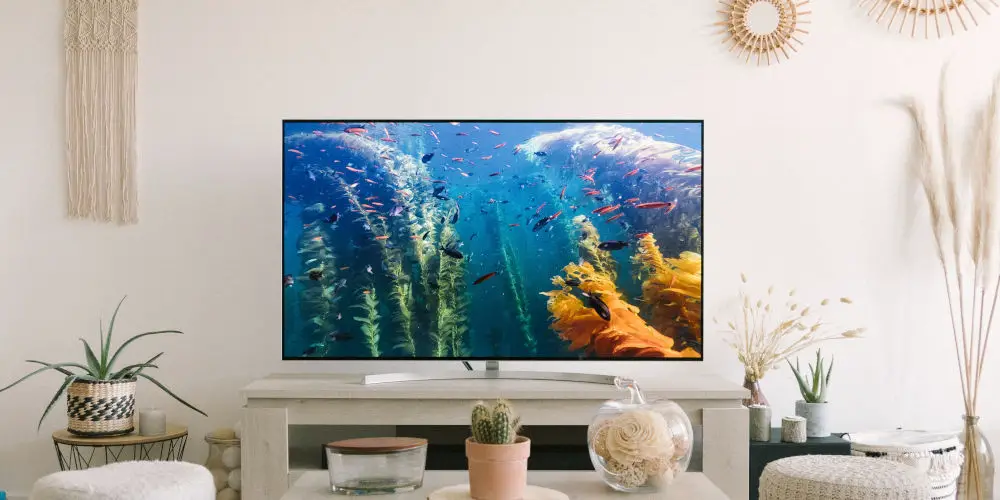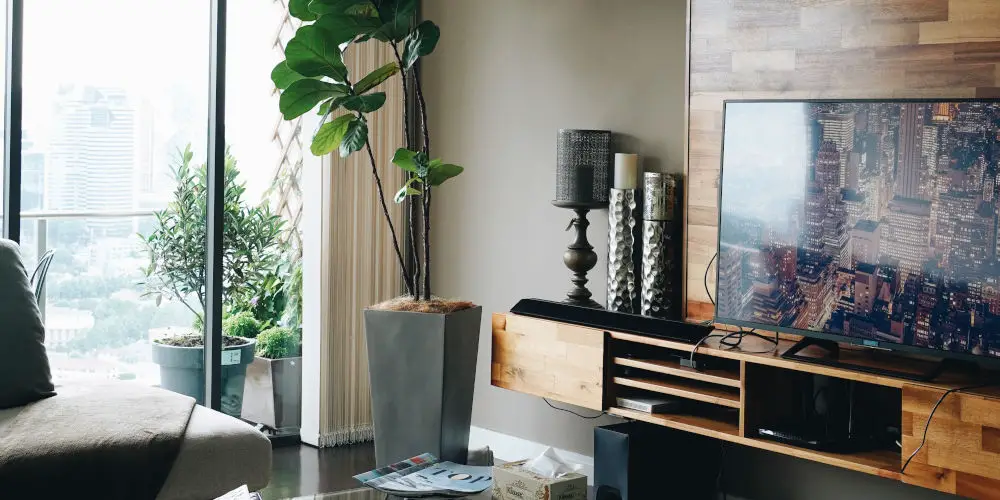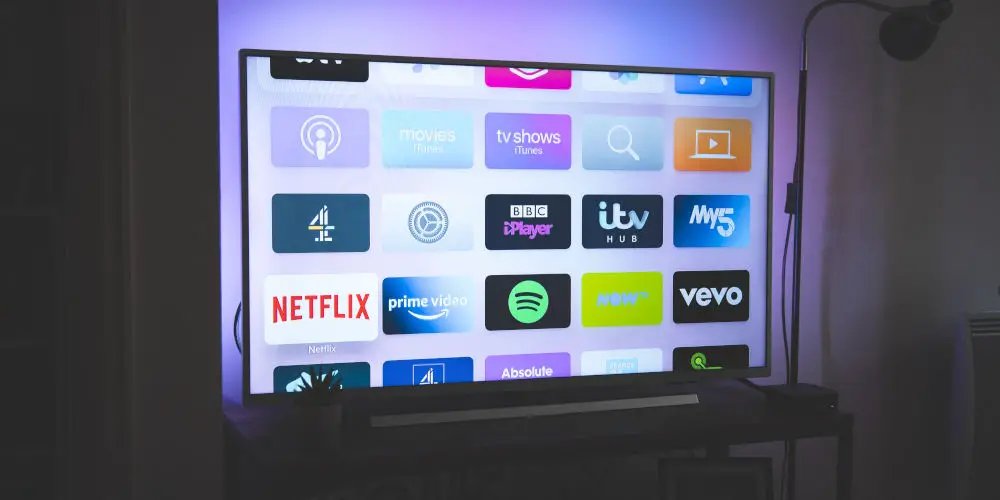What is 8K TV and should you buy one?

As a child of the 90s, our TV and yes, we only had the one, offered four channels and weighed that of a toddler! Nearly two decades later, we’re wondering what is 8K TV and if we should buy one.
In the last two decade, TVs have changed beyond recognition. Gone are the bulky, ugly CRTs. We now have abundant choices with options such as widescreen, flatscreen, curved, 3D, HD, Full HD, and 4K HDR, making the process of buying a TV that much harder!
We’ve even started to move away from 4K TVs to 8K as this new evolution of screen technology takes hold. Having invested in a 4K TV, you might be concerned that the move to 8K will render your latest purchase irrelevant, forcing you to return to the drawing board.
Thankfully, the picture (pun intended) isn’t that bleak! We’ll explain what is 8K TV and why you might want to wait before upgrading from your 4K TV.
What is 8K TV technology?
You wouldn’t be mistaken in thinking that 4K just launched, and all of a sudden, we’re on to 8K. But what does this all mean and is there a real difference between 4K and 8K?
Firstly, we’re talking about the resolution of the display. When we talk about what is 4K TV, we mean a display resolution of 3,840 x 2,160 pixels. In 8K this is much improved to 7,680 x 4,320. That means there are 7,680 pixels on the horizontal axis and 4,320 on the vertical.
Some might refer to it as 4320p (like Full HD was called 1080p). Others call it Ultra HD 8K (just as 4K was known as Ultra HD). Japanese broadcaster NHK is calling it Super Hi-Vision. But thankfully, most of the industry has settled on calling it 8K.
However, pixels are only part of the story. We also must consider HDR (high dynamic range), as it’s an essential part of what your TV will deliver.
Currently, the market is still at the early stages of adopting 4K. Each year, an increasing amount of options become available. So far, all the 8K TVs to hit the market have been flagship models. Each, offering a copious amount of features, however, unnecessary some might seem.

Has the industry settled on a single 8K standard?
As technology is developed behind closed doors, there is rarely a consensus between competing manufacturers when it comes to naming the new advances. And while many companies use the same basic terms, each wants to seem ahead of its rivals to create a unique selling point.
Thankfully, the industry has formed The 8K Association (8KA), which is tasked with overseeing the development of the 8K ecosystem and setting the basic specifications.
Currently, 8KA has set the basic public specs of what is 8K TV as: 7,680 x 4,320 pixel resolution; input frame rates of 24p, 30p, 60p; more than 600 nits peak brightness; HEVC support; and HDMI 2.1.
8K TVs that meet or exceed these standards can display the 8K Association Certified logo. With over 22 manufacturers including Samsung, committed to 8KA, spotting the logo should be easy.
But that’s not all. LG hasn’t joined 8KA but instead has teamed up with the Consumer Technology Association (CTA) in the US to standardise 8K TVs under the 8K Ultra HD banner. As a marketing ploy, LG will also use the expression “Real 8K”, suggesting other’s technology isn’t the real deal!
Like with 4K TV, it seems consumers are far more concerned about the details and colours of the displayed picture over what labels the box has.
Who’s manufacturing the best 8K TVs?
Like other TV features that have come and gone (remember 3D?!), many leading appliance brands offer 8K televisions.
For example, Samsung offers several 8K models as part of its 2021 Neo QLED range but expect to spend serious money. For affordable options, Sony has released several 8K TVs as part of its Z range.
LG offers an 8K OLED TV as part of their high-end Signature ZX range. At the more affordable end, LG does offer 8K televisions as part of its NanoCell and new QNED ranges.
Other brands that also offer 8K TV models include TCL, Toshiba and Hisense.

Should you invest in an 8K TV?
With that out of the way, the million-dollar question is should you buy an 8K TV? Without trying to dictate, our best advice is not quite yet. 4K TVs are widely available, and more content is being made available in this higher resolution.
As far as 8K, there are only a few models available. Very little content is being produced specifically for this resolution. That said, every frame of content you watch using an 8K TV will look magnificent as the technology increases the pixel density leading to greater depth and more vivid colours.
However, what 8K TVs excel at is our need for larger and larger screen sizes. Even 20 years ago the largest CRT size was 32 inches, with 14-inch screens being common.
When flatscreen TVs burst onto the market some 15 years ago, we were content with 28-inch TVs. Now, you’d likely be laughed at if your TV is smallest than 55-inch in size! Many will only consider a 65-inch TV suitable for their humble abode!
It’s possible to buy large-format 4K HDR TVs, with screens of up to 85 inches available. However, beyond a certain point, the case for the greater pixel density of 8K comes into focus.
At the same viewing point, the difference between a 4K and an 8K TV is clear. Unsurprisingly, 8K wins as the greater pixels density translates to greater depth and more true-to-life colours.
Beyond a 60-inch sized TV screen, there’s plenty of room to pack these extra pixels in, giving an 8K TV a clear advantage over other resolutions. Under 60-inch, the pixels will be too tightly packed for you to see a justifiable difference.
What drives our need for a bigger screen?
We want to feel fully immersed in whatever we’re watching. Like we’re on set or sat in the stadium. We want to feel every subtle (or not so) turn in a car chase scene. Or watch on-screen romance as they blossom!
With the greater intensity provided by 8K, you’ll feel an increased sense of immersion. The huge image will appear to engulf you, drawing you further into action.
It’s at these larger screen sizes that 8K TVs have a natural advantage because it increases the angles that light hits your eyes. Your brain can better separate the fore and background, creating a heightened sense of reality, thus allowing you a more immersive viewing experience.
That said, you’ll still need an adequate screen to seat space to allow you to experience the best possible image without having to constantly adjust your eyes!

Is much content available in 8K or can it be upscaled?
As there’s only a tiny amount of content available in 8K, the exercise of trying to explain what is 8K TV might seem futile!
For example, Vimeo offers support for 8K resolution content and the Japanese broadcaster NHK is aiming to film the Tokyo Olympics 2020 in 8K (albeit when it happens in 2021). Other than these, implementation is still at the early stages.
Currently, Netflix or Amazon Prime video is yet to offer 8K content, with the service investing heavily in 4K. Very few broadcasters or film studios are capturing content in 8K, let alone releasing in this resolution.
But hope is on the horizon with Samsung releasing the Galaxy S20 smartphone that offers 8K capture. That said, it’s still a niche format that’s years away from being adopted as a studio standard.
For the near future, it seems that 8K TVs will continue to upscale content, much like a Blu-ray player upscale old DVDs, giving them a new lease of life. Just, in this case, the technology will use AI to analyse each frame while boosting and correcting the colours, and smoothing the edges.
Using technology or even AI, in this way is nothing new. However, the system is far more advanced than even that used on the latest or top specification 4K televisions. It’s worth pointing out that upscaling content to 8K requires plenty of processing power and RAM.
In short, a minuscule amount of content is available 8K but the technology that powers your 8K TV will upscale every frame regardless of the starting resolution to produce a far superior image.
Should you run out and buy an 8K TV today?
As with all new technology, early adopters pay a heavy price for being at the top of the queue! There’s little reason to stop you from buying an 8K TV today, only to feel the benefits in a few years as more content is specifically released in this resolution rather than solely being upscaled.
Investing now still offer many advantages thanks to the built-in AI that upscales content to 8K.
Of course, as more content is produced and consumed in 4K, creators will continue to experiment with releasing content in these higher resolutions. It’s not hard to see 8K being widely adopted in just a few years.
That said, on average we change our televisions every 5 years. So by that estimate, there’s likely much evolution to come before we’ll all be enjoying 8K content. So if you’re not fully convinced, invest in a 4K TV now and wait for 8K to become more commonplace.




